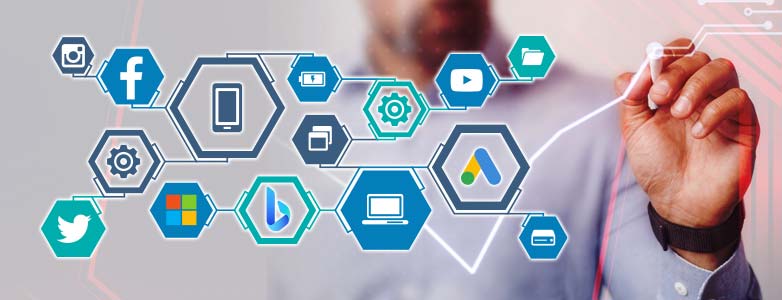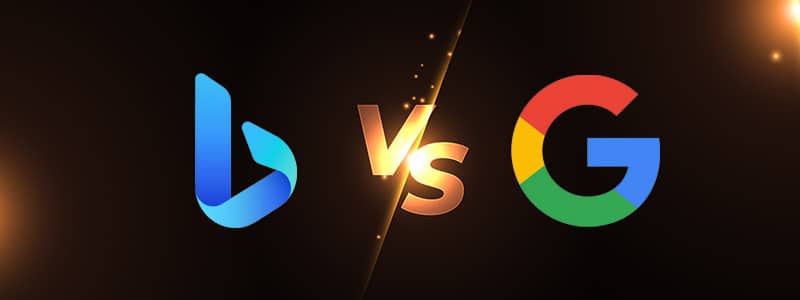Digital B2B Advertising Platforms: Which Ones are Right for Your Business?
With Americans spending an average of 10+ hours a day logging screen time (4+ hours of that on a mobile device), savvy marketers have increased digital marketing tactics, serving their messages to prospective and current customers on those screens. As pay-per-click (PPC) advertising grows, your strategy not only needs compelling messages and stand-out visuals that grab attention, but thoughtful decisions about when and where those ads should appear. With several B2B advertising platforms to choose from, you may be wondering which networks will best fulfill your marketing goals. Let’s explore the most popular B2B advertising platforms and their benefits: Google Ads® Without a doubt, Google is the most popular search engine in the world, making it a likely choice among B2B advertising platforms to include in your overall PPC strategy. Google offers a large range of targeting options to help ensure you’re reaching your right audience, including, but not limited to: · Demographics· Search history· Interests· Life events Along with these targeting options come types of ad choices as well. Depending on your business’ overall goals, either of these ad types (or a combination of both) can be beneficial: Google Search Network serves text advertisements that include a URL link, title and description at the top or bottom of search engine result pages (SERP) based on the keywords of a user’s query. For instance, a Google search of “online car sales” displayed this ad for Carvana® at the top of SERP results. Ads can appear across multiple Google sites, including Google Play, Google Shopping, Google Images and more. Utilizing Google Search Partners, your ad can also show on a number of Google/Alphabet-owned websites when a user conducts a related search. It’s important to note that these ads only show to users who are searching for a particular product/service or looking for an answer to a specific question. Google Display Network showcases visual “display” ads as opposed to text-only advertisements. Unlike search ads that only show on SERP, display ads can be served across Google sites, on social media, within email and on millions of webpages. When working with a skilled agency partner like Stifel Marcin, you will know your display ads are highly targeted, based on parameters mentioned above, serving to target audience personas more effectively. While running an ad on Google can seem simple, effectively advertising and monitoring campaigns, optimizing results and ensuring ROI is not. B2B advertising platforms like Google benefit (i.e. profit from) increasing advertisers, and driving up a company’s spend. Making it seem simple to set up a digital PPC campaign launch is in Google’s interests. As a certified Google Ads agency, our team has expertise in Google Ads marketing for the B2B market. See how our Google ads management service experts can craft a strategy for your business that meets your goals and maximizes ROI. Microsoft Advertising® (formerly Bing Ads®) With the visibility of Google, some marketers have overlooked Microsoft Advertising. While each business has unique needs and goals, we believe that in many instances, the thinking shouldn’t be “Google OR Bing,” but rather “Google AND Bing.” As a typical rule of thumb, B2B customers are on Bing. Consider that most employees use a company-issued PC that uses MS operating systems (including Bing as the default search engine). If your targets are people at these companies, you may find this search engine is a smart place to make an investment. Major benefits of Bing/Microsoft Ads include: · The ability to run a campaign not only on Bing, but on other Microsoft ownedproperties like AOL and Yahoo· Many targeting options, including location, demographics, time of day anddevice type· Less keyword competition, typically making the platform a more budget-friendly choice· Remarketing messaging to drive potential customers back to your website· A variety of advertising formats, including expanded text ads, multimedia adsand product ads· Leveraging LinkedIn data to help with targeting (Microsoft owns LinkedIn) If it aligns with your business goals, our Bing Ads management service can help you reach more users. Also, check out our article “Five Considerations for B2B Marketers Debating “Bing Ads vs GoogleAds” for more information. Native Ads Think of native ads as “non-disruptive” advertisements that blend in with the flow of the website page on which they appear. Often they have a more organic feel in the overall space, vs a traditional display ad that would appear at the top of a search or in a sidebar. In many cases the ad may look like editorial content. On a social feed, that may look like a sponsored carousel post. If you notice content that states it is “recommended” for you, you’re likely looking at a native ad. Native ads are a hot topic as marketers prepare for a cookieless world. B2B advertising platforms offering native advertising promote the ability to target audiences based on subject matter. Simply put, this approach would serv an ad with content related to the article. So, in the above example, if Carvana wanted to serve native ads, they might select a series of articles related to automotive topics. Social Media B2B Advertising Platforms Social media is increasingly critical to an integrated marketing plan. When used as part of a holistic, strategic plan, social media advertising can reap rewards in increased brand awareness, web traffic and leads and is a proven part of the B2B buyer journey. The ability to A/B test ads also offers insights into customer needs and wants. Of note – 75 percent of B2B buyers and 84 percent of C-level executives are influenced by social media when making purchasing decisions. Targeted social media advertising can position the right messages to the right audience at the right time. The B2B advertising platforms offered by social media sites are robust. And as we prepare for a cookieless future, they also provide marketers with a variety of valuable interest and profile data that can be used in targeting. Facebook® Facebook is one of the most widely used social media platforms, with an estimated 89 percent of U.S. B2B marketers using it for brand awareness, lead generation and more. With
Digital B2B Advertising Platforms: Which Ones are Right for Your Business? Read More »




